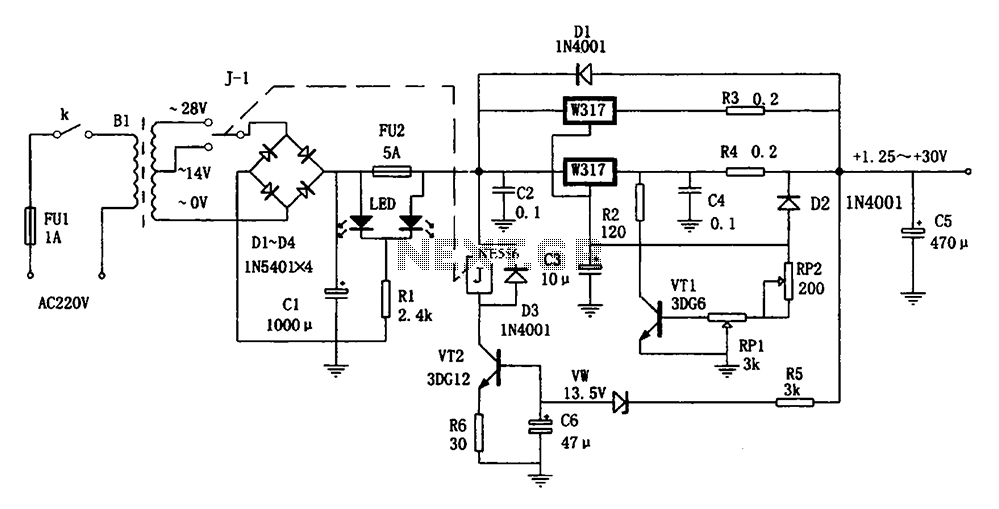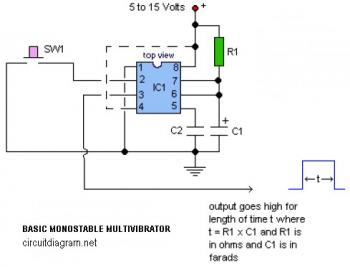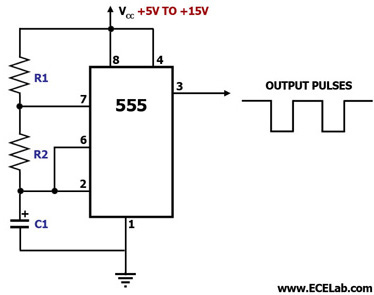
Stable Start-Stop Oscillator

Oscillators that generate a predetermined number of pulses are often required in applications such as video work. This oscillator starts 13 ms after the control signal goes high and stops immediately when the input signal goes low.
In electronic applications, pulse generators play a crucial role, particularly in video signal processing and timing applications. The described oscillator is designed to produce a specific number of pulses, which can be essential for synchronizing video signals or creating timing references in various circuits.
The operation of this oscillator is initiated by a control signal. Upon receiving a high-level input, the oscillator begins its cycle after a delay of 13 milliseconds. This delay is critical as it allows for the stabilization of the input signal and ensures that the system is ready to operate without introducing timing errors.
Once the control signal transitions to a high state, the oscillator is activated, and it will generate the predetermined number of output pulses. The precise timing and number of these pulses can be adjusted based on the requirements of the application, allowing for flexibility in design.
When the control signal goes low, the oscillator ceases operation immediately. This feature ensures that the circuit can quickly respond to changes in the input signal, making it suitable for dynamic environments where timing is crucial.
In designing such an oscillator, considerations may include the choice of components such as resistors, capacitors, and integrated circuits that can define the frequency and pulse width. Additionally, the circuit may incorporate feedback mechanisms to improve stability and accuracy in pulse generation.
Overall, this type of oscillator is valuable in various electronic systems, providing reliable pulse generation that meets the demands of modern applications, particularly in the realm of video technology. Oscillators that generate a predetermined number of pulses are often required in applications such as video wo rk. This oscillator starts 13 ms after the control signal goes high and stops immediately when the input signal goes low.
In electronic applications, pulse generators play a crucial role, particularly in video signal processing and timing applications. The described oscillator is designed to produce a specific number of pulses, which can be essential for synchronizing video signals or creating timing references in various circuits.
The operation of this oscillator is initiated by a control signal. Upon receiving a high-level input, the oscillator begins its cycle after a delay of 13 milliseconds. This delay is critical as it allows for the stabilization of the input signal and ensures that the system is ready to operate without introducing timing errors.
Once the control signal transitions to a high state, the oscillator is activated, and it will generate the predetermined number of output pulses. The precise timing and number of these pulses can be adjusted based on the requirements of the application, allowing for flexibility in design.
When the control signal goes low, the oscillator ceases operation immediately. This feature ensures that the circuit can quickly respond to changes in the input signal, making it suitable for dynamic environments where timing is crucial.
In designing such an oscillator, considerations may include the choice of components such as resistors, capacitors, and integrated circuits that can define the frequency and pulse width. Additionally, the circuit may incorporate feedback mechanisms to improve stability and accuracy in pulse generation.
Overall, this type of oscillator is valuable in various electronic systems, providing reliable pulse generation that meets the demands of modern applications, particularly in the realm of video technology. Oscillators that generate a predetermined number of pulses are often required in applications such as video wo rk. This oscillator starts 13 ms after the control signal goes high and stops immediately when the input signal goes low.





